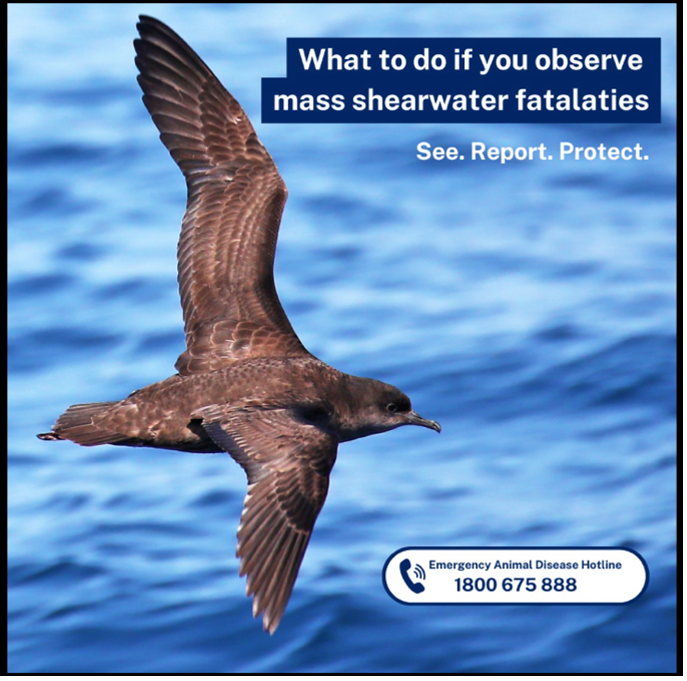 Dead and debilitated migratory shearwaters have recently been found along beaches and coastlines in Qld, NSW, Vic and SA. The majority of the birds are short-tailed shearwaters (Ardenna tenuirostris), which are a widespread, abundant seabird species, with a worldwide population of many millions. In the Austral spring, they undertake a 15,000 km migration from their wintering grounds in the northern hemisphere to their breeding areas in Australia.
Dead and debilitated migratory shearwaters have recently been found along beaches and coastlines in Qld, NSW, Vic and SA. The majority of the birds are short-tailed shearwaters (Ardenna tenuirostris), which are a widespread, abundant seabird species, with a worldwide population of many millions. In the Austral spring, they undertake a 15,000 km migration from their wintering grounds in the northern hemisphere to their breeding areas in Australia.
Mass mortalities or “wrecks” of migrating seabirds occur regularly along the coastlines of Australia, generally in spring. These mass mortalities are considered a by-product of long migration, starvation and exhaustion, exacerbated by severe weather conditions. Climatic conditions, ocean temperatures, food resources and ingestion of marine debris may also play a role in these events.
Testing of some shearwater carcasses has been undertaken by government agencies and there is no indication that the deaths are a result of the H5N1 high pathogenicity avian influenza (H5 bird flu), which has been causing mass wildlife mortalities overseas. State biosecurity agencies are continuing to monitor reports of shearwater and other bird mortalities.
Australia remains free from high pathogenicity avian influenza. Ongoing monitoring of shearwater mortality events is recommended, to gain more information on possible changes in size or frequency of events, and better understand factors contributing to them.
See also the WHA Fact Sheet: Shearwater mass mortalities.
There are many possible causes of wild bird or other wild animal illness and death, so it is useful for people who encounter sick or dead wildlife to be aware of the potential signs of disease. Mortality events are important given we are on the lookout for avian influenzas. We encourage members of the public who find multiple dead birds not to touch them. Take photos or a video, record your location and report it to the Emergency Animal Disease Hotline on 1800 675 888. This will put you in touch with your state or territory’s biosecurity authority. Reporting will alert authorities to the event so they can evaluate the need for diagnostic testing or other investigation. Even if testing is not undertaken, all reports help inform our understanding.
